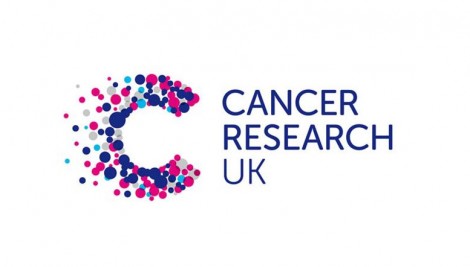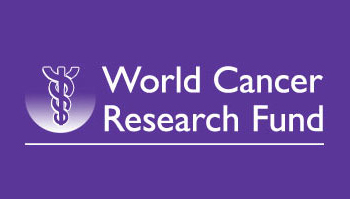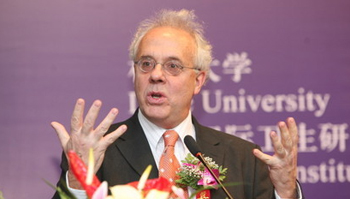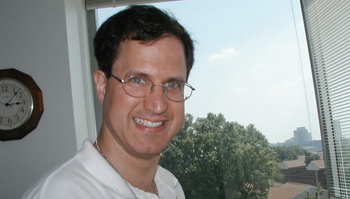Biomarker in an aggressive breast cancer is identified
Two Northwestern University scientists have identified a biomarker strongly associated with basal-like breast cancer, a highly aggressive carcinoma that is resistant to many types of chemotherapy.
The biomarker, a protein called STAT3, provides a smart target for new therapeutics designed to treat this often deadly cancer.
Using breast cancer patient data taken from The Cancer Genome Atlas, molecular biologists Curt M. Horvath and Robert W. Tell used powerful computational and bioinformatics techniques to detect patterns of gene expression in two cancer subtypes.
They found that a small number of genes are activated by STAT3 protein signalling in basal-like breast cancers but not in luminal breast cancers.
Basal-like cancer is a category that includes a number of different breast cancers, including the highly aggressive form called triple negative cancer.
“You can’t treat breast cancer as one disease,” Horvath said.
“Cancer describes many molecular processes that have gone wrong. We have teased out from large amounts of data that STAT3 activity correlates with distinct patterns of gene expression in one type of breast cancer but not in another.”
The findings were published in the online early edition of Proceedings of the National Academy of Sciences (PNAS).
The results suggest a clinical study should be conducted of a STAT3-inhibiting drug in patients with basal-like and luminal cancers, Horvath said.
Currently there are no pills or injections targeting STAT3 for breast cancer patients.
Horvath is a professor of molecular biosciences in Northwestern’s Weinberg College of Arts and Sciences and a professor of microbiology-immunology and of medicine at Northwestern University Feinberg School of Medicine.
Previous research has found the STAT3 protein to be overactive in many breast cancers, but its role has not been well understood.
Horvath and Tell’s research is the first reported study to compare breast cancer subtypes and gene expression patterns associated with STAT3 in the tumours of human patients.
Horvath emphasised that this is a statistical analysis and the findings need to be verified with careful laboratory and clinical experiments.
He plans to conduct such a study with colleagues at the Robert H. Lurie Comprehensive Cancer Center of Northwestern University.
“The Cancer Genome Atlas is a really rich and growing database of publicly available data created to help us understand cancer,” said Horvath, who is a program co-leader of the Signal Transduction in Cancer program at the Lurie Cancer Center.
“It allows basic scientists to ask interesting questions about cancer and contribute to clinical care.”
Horvath and Tell observed that there are many clearly visible patterns of common gene expression – where certain genes are turned on and certain genes are turned off – in the basal-like cancers.
Those clear patterns were not seen in the luminal cancers.
“This opens up the possibility that cancer subtype-specific signalling is driven by STAT3 and that STAT3 inhibitors may be more effective in patients diagnosed with basal-like cancers than in those with luminal cancers,” Horvath said.
STAT3 stands for “signal transducer and activator of transcription 3,” a transcription factor (a protein) encoded by the STAT3 gene in humans.
In addition to its known roles in cancerous cells, STAT3 also is an essential mediator of cytokine and growth factor signals in normal cells that are important for diverse processes including immunity and inflammation.
Tell, a postdoctoral fellow in Horvath’s lab, had a strong interest in cancer and was very skilled at computational bioinformatics.
To design the study, he combined these two elements with the long-time focus of Horvath’s lab on STAT3, which has been implicated in cancer in general, as both a causative agent and a survival factor.
Horvath and Tell identified 84 genes that are expressed differently in basal-like cancer tumours as compared to luminal cancer tumours.
These genes are highly representative of the immune response and inflammation processes, Horvath said, and consistent with the role of STAT3.
Tell and Horvath’s intensive analysis used data from 825 breast cancer patients from across the country, each with hundreds of data points.
The data included protein expression, protein phosphorylation, which indicates which signalling pathways are activated, and messenger RNA and microRNA expression.
To sort through the vast amounts of data, the researchers took advantage of Quest, a high-performance computing system at Northwestern.
The computer cluster they used offered the equivalent of the processors and random-access memory (RAM) of eight powerful desktop computers linked together.
References
Robert W. Tell and Curt M. Horvath, Bioinformatic analysis reveals a pattern of STAT3-associated gene expression specific to basal-like breast cancers in human tumours, PNAS July 28, 2014.
Source: Northwestern University
























